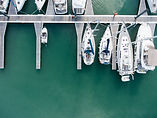DC Circuit Protection
- Lenny Fourie

- Jun 14, 2020
- 4 min read
Protecting the electrical circuits and your boat.

Looking at the wiring on your boat can either be neatly managed, correctly terminated, cable tied and fused, or chaos of a bunch of cables and poor connection! If it is the latter, then you need to contact us today!
When we break it down to the individual circuits, there is quite a bit to consider in order for your boat to comply with regulations, but most importantly, for your boat to be safe. For more information on installation standards, the most commonly known is the ABYC E-11 of the American Yacht and Boat Council (ABYC) and the NMEA 0400 of the National Marine Electronics Association (NMEA). Throughout the EU we have ISO-9001 standards and these are currently only enforced at construction and not for any installation after the boats CE Approval.
The Circuit
Without going into too much detail, a DC Circuit can be though of as everything connected to your batteries. In order to create a circuit, you need a source of power, a conductor, a fuse and a load. The fuse is designed to protect the entire circuit from damage caused by excess current from an over load or short circuit.
In a survey done by BoatUS Marine Insurance, between 2008 and 2012, electrical short circuits were the number one cause of fires on board. It was reported that 55% of fires were caused by electrical faults, and 43% of those were found to be in the boats DC electrical system.

On your boat, you will find cables carrying power to and from each piece of equipment, note that we are saying 'to and from', because when we calculate the cable or conductor size for an individual piece of equipment we use the distance from the power source and back.
Choosing the right wire size for your DC electrical project is important, since a wire that is too small can overheat and possibly start a fire. The American Boat and Yacht Council (ABYC) publishes charts with valuable detail to help experienced boatbuilders and installers determine what wire size they need. Although these charts are an excellent resource, they can be a bit intimidating to the DIY boater.
In order to rate the conductor size Blue Sea Systems have a very handy online tool to assist with choosing the correct cable size. (Also available on iOS and Android) As well as cable size, it will also suggest a suitable fuse or circuit breaker, based on information entered into the circuit wizard.
Fuse Rating
Fuses are rated in amperage and regulation require every ungrounded wire except those in the engine starting circuit to have circuit protection.
Always select a fuse size to protect the wire according to its rating. In some cases, a product manufacturer will specify a fuse value lower than required for protecting the wire. If this fuse value is too high to protect the wire, use a bigger wire in the circuit.
We have to consider fuse amperage within a range of minimum and maximum.
The Maximum amperage reduces nuisance blows but offers less protection for the wire.
Example: For a 25mm2 single wire outside the engine room, max fuse amperage is 150A.
The Minimum amperage provides more protection for the wire but may result in nuisance blows. If we multiply product fuse rating by 125% we'll get minimum amperage.
Example: 80A x 125% = 100A
Using the information from our example, a mid range value of 125A is usually acceptable. These same steps should now be considered for every individual circuit.
Factors to Consider
Important factors to consider when adding circuit protection to your boat’s DC electrical system include:
Ampere Interrupt Capacity (AIC)
In certain circumstances, main DC circuit breakers may have to break very high amperage. In such situations, the points inside the breaker may arc over, and may fuse together.
Mounting location
Sometimes there are physical limitations to how close a circuit protection device can be placed to the source of power. In any case, fuses, circuit breakers, and switches should not be installed in battery compartments because of the risk of corrosion coupled with the potential presence of explosive gasses.
Overcurrent protection (7/40/72 Rule)
Generally, circuit protection devices are installed to protect the wiring from overheating during overloads or faults. The simplest approach for selecting a circuit protection device rating is to choose an amperage rating that is equal to or less than the current rating, ampacity of the wire.
Ignition protection
To be ignition protected, these devices must have spark-producing mechanisms sealed, and have low enough surface temperatures that they will not ignite gas fumes.
Final Note

If more current flows in a wire than the wire is rated to handle, the wire can heat up, its
protective insulation can melt, and the heated wire can start a fire. Fuses and circuit breakers are used to limit the amount of current that flows through circuit wires. Except for those wires that are intended to carry starting currents, every positive wire in the DC main power distribution system must be protected by a fuse or circuit breaker.









Comments